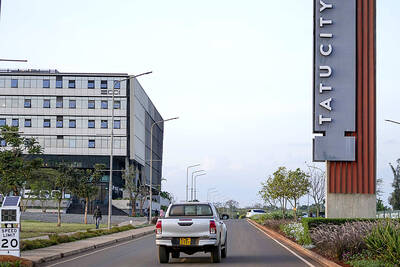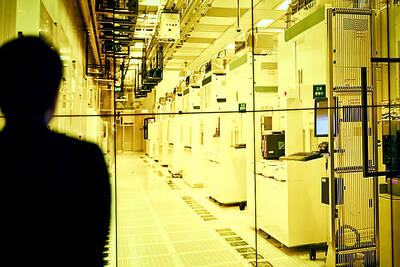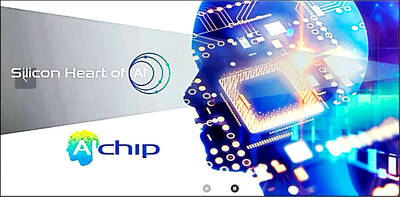The European Central Bank (ECB) looks set to ring in the new year with interest rates on hold, but will have its work cut out for it this year, analysts say.
The ECB’s policy-setting governing council is scheduled to hold its first meeting of this year on Thursday, but central bank watchers are not projecting any new measures just yet after a surprise rate cut in November last year.
“The ECB’s governing council appears unlikely to make any substantive policy changes at its first policy meeting of the year,” Jonathan Loynes at Capital Economics said.
“But the ongoing combination of weak economic growth, a damagingly strong currency and poor liquidity conditions will maintain the pressure on the central bank to take further action to support the region’s fragile economic recovery in 2014,” he said.
SURPRISE MOVE
The ECB took markets by surprise in November and pared back its central “refi” refinancing rate by a quarter of a percentage point to a record low of 0.25 percent.
The reason behind the move was an expectation that the single currency area is facing a prolonged period of very low inflation.
Area-wide inflation picked up fractionally in November, but analysts believe that does not sound the all-clear and the ECB may have to take further action again at some point.
There is “no immediate need to act,” Commerzbank economist Michael Schubert said.
“ECB council members signaled in recent weeks that they currently see no need for further measures,” he said.
“Against this backdrop we expect that ECB President Mario Draghi will merely emphasize once again that the ECB is ready to act,” Schubert said.
In addition to changing interest rates, the ECB could pump more liquidity into the financial system to get credit flowing again between banks and businesses, crucial if any economic upturn is to be sustained.
DECLINING LOAN RATE
For the moment, loans to businesses in the euro area are continuing to decline, new ECB data showed on Friday.
Private sector loans dropped by 2.3 percent in November in a year-on-year comparison, after already contracting by 2.2 percent in October, the ECB calculated.
The ECB already pumped more than 1 trillion euros (US$1.3 trillion) into the banking system at the end of 2011 and the beginning of 2012 to avert a potentially disastrous credit crunch.
However, the banks preferred to use the ultracheap cash to buy up sovereign bonds rather than lend it on to businesses and the ECB is considering ways of channeling the cash directly to businesses if it decides to open the liquidity gates once again.
CREDIT CRUNCH?
“The governing council obviously agrees that with possible further steps the ECB wants to provide targeted support to the real economy. But there seem to be differences of opinion as to what is the most effective way to reach this target,” Loynes said.
London-based Berenberg Bank chief economist Holger Schmieding said the weak credit data did suggest a possible credit crunch.

To many, Tatu City on the outskirts of Nairobi looks like a success. The first city entirely built by a private company to be operational in east Africa, with about 25,000 people living and working there, it accounts for about two-thirds of all foreign investment in Kenya. Its low-tax status has attracted more than 100 businesses including Heineken, coffee brand Dormans, and the biggest call-center and cold-chain transport firms in the region. However, to some local politicians, Tatu City has looked more like a target for extortion. A parade of governors have demanded land worth millions of dollars in exchange

An Indonesian animated movie is smashing regional box office records and could be set for wider success as it prepares to open beyond the Southeast Asian archipelago’s silver screens. Jumbo — a film based on the adventures of main character, Don, a large orphaned Indonesian boy facing bullying at school — last month became the highest-grossing Southeast Asian animated film, raking in more than US$8 million. Released at the end of March to coincide with the Eid holidays after the Islamic fasting month of Ramadan, the movie has hit 8 million ticket sales, the third-highest in Indonesian cinema history, Film

Taiwan Semiconductor Manufacturing Co’s (TSMC, 台積電) revenue jumped 48 percent last month, underscoring how electronics firms scrambled to acquire essential components before global tariffs took effect. The main chipmaker for Apple Inc and Nvidia Corp reported monthly sales of NT$349.6 billion (US$11.6 billion). That compares with the average analysts’ estimate for a 38 percent rise in second-quarter revenue. US President Donald Trump’s trade war is prompting economists to retool GDP forecasts worldwide, casting doubt over the outlook for everything from iPhone demand to computing and datacenter construction. However, TSMC — a barometer for global tech spending given its central role in the

Alchip Technologies Ltd (世芯), an application-specific integrated circuit (ASIC) designer specializing in server chips, expects revenue to decline this year due to sagging demand for 5-nanometer artificial intelligence (AI) chips from a North America-based major customer, a company executive said yesterday. That would be the first contraction in revenue for Alchip as it has been enjoying strong revenue growth over the past few years, benefiting from cloud-service providers’ moves to reduce dependence on Nvidia Corp’s expensive AI chips by building their own AI accelerator by outsourcing chip design. The 5-nanometer chip was supposed to be a new growth engine as the lifecycle